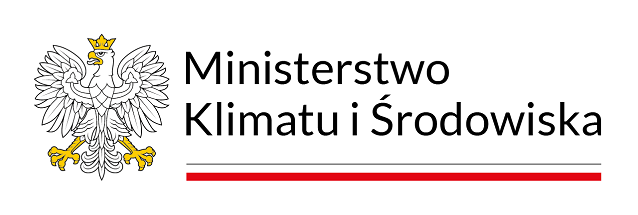Mammals

In Poleski National Park so far 48 species of mammals have been recorded. Rodents constitute the most numerous group, of which there are 18 species. The biggest one of them is the beaver, which was introduced in 1992. Out of the smallest rodents, the bank vole, inhabiting forests and thickets, as well as meadows and low turflands, is undoubtedly the most numerous species. Other equally common species of voles are: the tundra, the field and the common. They belong to the vermin of agricultural cultivation. Above the waters, however, live two larger, foreign species in our fauna: the muskrat and the European water vole. From the familyô Muridae, we come across in the woodlands: the wood mouse and the yellow-necked mouse, while on the open spaces of the meadows and turflands: the striped field mouse and the Eurasian harvest mouse.
Insectivorous mammals constitute an equally numerous group, out of which we can find here the biggest of their representative: the southern white-breasted hedgehog, as well as numerous moles and shrews. In the marshy forests of the Park, we can come across extremely predatory, though little, Eurasian water shrew. This biggest representative of theô Soricidaeô family is an excellent swimmer, and it hunts frogs, insects and other invertebrates. It is our only venomous mammal.
In Poleski National Park we also come across predatory mammals. The most common representative is the weasel, and similar to it, the stoat. Representatives from the bigger familyô mustelidaeô are: the European polecat, the beech marten, the European pine marten and the European otter, which is found in water. From time to time we can come across wolves, the natural culler of deer. This is one of the largest predatory mammals which occurs here, and recently, more and more often. Unfortunately, these are only isolated units, wandering only through the Park area on their way to the larger forest complexes.
The most numerous representative of the ungulates in PNP, which belongs to the deer family, is the roe deer. The head count in the Park is estimated at around 800 animals. From other ungulate representatives, we also come across the red deer, whose number is estimated at around 80 animals. The biggest animal of the Park is however the moose. The headcount for this beast is estimated at around 150 animals, and they have the highest density in Poland. It is worth mentioning about one more large-hoofed mammal, which is the wild boar. Its number is estimated at around 200 animals. It is an animal living in little packs called herds, which usually constitute of a female with her young.
Mammals recorded in PNP area (protected, endangered, rare, and game: from Natura 2000 list)
|
Item number |
Species name |
Species protection |
Hunting protection |
Red List of Threatened Animals in Poland |
Polish Red Data Book of Animals |
Natura 2000 |
||
|
English |
Latin |
Close |
Partial |
|||||
|
1. |
Southern white-breasted hedgehog |
Erinaceus concolor |
+ |
ô | ô | ô | ô | ô |
|
2. |
European mole |
Talpa europaea |
+ |
ô | ô | ô | ô | ô |
|
3. |
Common shrew |
Sorez minutus |
+ |
ô | ô | ô | ô | ô |
|
4. |
Eurasian pygmy shrew |
Sorex minutus |
+ |
ô | ô | ô | ô | ô |
|
5 |
Bi-coloured shrew |
Crocidura leucodon |
+ |
ô | ô | ô | ô | ô |
|
6. |
Eurasian water shrew |
Neomys fodiens |
+ |
ô | ô | ô | ô | ô |
|
7. |
Eurasian harvest mouse |
Micromys minutus |
ô |
+ |
ô | ô | ô | ô |
|
8. |
Wood mouse |
Apodemus sylvaticus |
ô |
+ |
ô | ô | ô | ô |
|
9. |
Bank vole |
Clethrionomys glareolus |
ô | ô | ô | ô | ô | ô |
|
10. |
European water vole |
Arvicola terrestris |
ô | ô | ô | ô | ô | ô |
|
11. |
European pine vole |
Pitymys subterraneus |
ô | ô | ô | ô | ô | ô |
|
12. |
Tundra vole |
Microtus oeconomus |
ô | ô | ô | ô | ô | ô |
|
13. |
Field vole |
Microtus agrestis |
ô | ô | ô | ô | ô | ô |
|
14. |
Common vole |
Microtus arvalis |
ô | ô | ô | ô | ô | ô |
|
15. |
House mouse |
Mus musculus |
ô | ô | ô | ô | ô | ô |
|
16. |
Striped field mouse |
Apodemus agrarius |
ô | ô | ô | ô | ô | ô |
|
17. |
Yellow-necked mouse |
Apodemus flavicollis |
ô | ô | ô | ô | ô | ô |
|
18. |
Black rat |
Rattuss rattus |
ô | ô | ô | ô | ô | ô |
|
19. |
Natterer's bat |
Myotis nattereri |
+ |
ô | ô | ô | ô | ô |
|
20. |
Brandt's bat |
Myotis brandti |
+ |
ô | ô | ô | ô | ô |
|
21. |
Pond bat |
Myotis dasycneme |
+ |
ô | ô |
EN |
EN |
+ |
|
22. |
Daubenton's bat |
Myotis daubentonii |
+ |
ô | ô | ô | ô | ô |
|
23. |
Serotine bat |
Eptesicus serotinus |
+ |
ô | ô | ô | ô | ô |
|
24. |
Common pipistrelle |
Pipistrellus pipistrellus |
+ |
ô | ô | ô | ô | ô |
|
25. |
Nathusius's Pipistrelle |
Pipistrellus nathusii |
+ |
ô | ô | ô | ô | ô |
|
26. |
Brown long-eared bat |
Plecotus auritus |
+ |
ô | ô | ô | ô | ô |
|
27. |
Common noctule |
Nyctalus noctula |
+ |
ô | ô | ô | ô | ô |
|
28. |
European hare |
Lepus europaeus |
ô | ô |
+ |
ô | ô | ô |
|
29. |
Red squirrel |
Sciurus vulgaris |
+ |
ô | ô | ô | ô | ô |
|
30. |
Eurasian beaver |
Castor fiber |
ô |
+ |
ô | ô | ô |
+ |
|
31. |
European hamster |
Cricetus cricetus |
+ |
ô | ô | ô | ô | ô |
|
32. |
Northern birch mouse |
Sicista betulina |
+ |
ô | ô | ô | ô | ô |
|
33. |
Hazel doormouse |
Muscardinus avellanarius |
+ |
ô | ô | ô | ô | ô |
|
34. |
Grey wolf |
Canis lupus |
+ |
ô | ô |
NT |
NT |
+ |
|
35. |
European otter |
Lutra lutra |
ô |
+ |
ô | ô | ô |
+ |
|
36. |
Stoat |
Mustela erminea |
+ |
ô | ô | ô | ô | ô |
|
37. |
Least weasel |
Mustela nivalis |
+ |
ô | ô | ô | ô | ô |
|
38. |
Muskrat |
Ondathra zibethicus |
ô | ô |
+ |
ô | ô | ô |
|
39. |
Red fox |
Vulpes vulpes |
ô | ô |
+ |
ô | ô | ô |
|
40. |
Raccoon dog |
Nyctereutes procyonides |
ô | ô |
+ |
ô | ô | ô |
|
41. |
European badger |
Meles meles |
ô | ô |
+ |
ô | ô | ô |
|
42. |
European pine marten |
Marten martes |
ô | ô |
+ |
ô | ô | ô |
|
43. |
Beech marten |
Marten foina |
ô | ô |
+ |
ô | ô | ô |
|
44. |
European polecat |
Mustela putorius |
ô | ô |
+ |
ô | ô | ô |
|
45. |
Wild boar |
Sus scrofa |
ô | ô |
+ |
ô | ô | ô |
|
46. |
Moose |
Alces alces |
ô | ô |
+ |
ô | ô | ô |
|
47. |
Roe deer |
Capreolus capreolus |
ô | ô |
+ |
ô | ô | ô |
|
48. |
Red deer |
Cervus elaphus |
ô | ô |
+ |
ô | ô | ô |



.jpg)










































